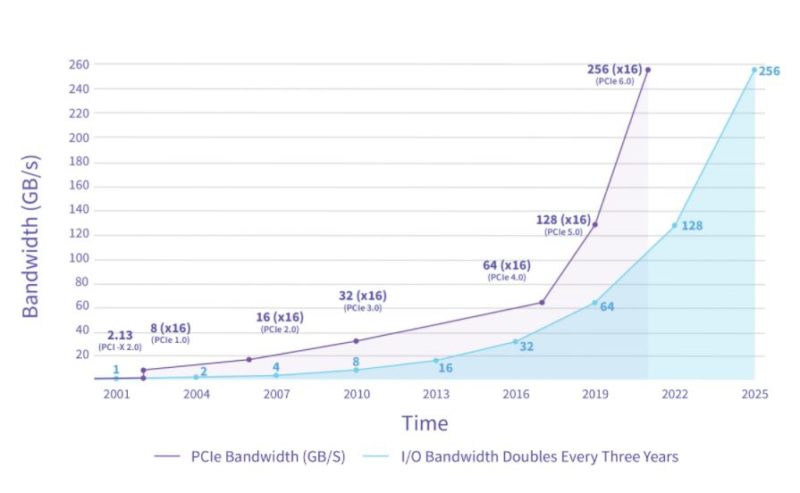Today we have the next generation of PCIe, PCIe Gen6 or PCIe 6.0. This new generation will be able to handle 64GT/s which means 256GB/s on a PCIe Gen6 x16 link, double that of PCIe Gen5, or quadruple what today’s PCIe Gen4 servers can achieve.
PCI-SIG Releases 256GBps PCIe 6.0 x16 Spec
One of the big drivers for PCIe 6.0 the PCI-SIG says is SSDs. This is actually a really interesting chart. Cloud is expected to grow, as will client SSDs and that is likely the point of the chart. The bigger insight is that enterprise NVMe SSDs are a very small portion of the current and projected market. While cloud providers have largely swapped to NVMe, many enterprise vendors are still on SAS SSDs.

The big story here though is really the cadence. PCIe Gen3 to Gen4 was a very long cadence. After Gen4, the speed at which we are getting new standards is increasing rapidly.

2022 will be the year where we see broad platform support for PCIe Gen5 so the next-generation Gen6 will not be in 2022. Still, having the standard with new Flits (fixed size flow control units) for lightweight FEC, PAM4 signaling, and more is a big deal. This means that the ecosystem can start building and validating designs to the new standard.
Final Words
PCIe Gen6 is important beyond just having a faster pipeline for a SSD. Recall that Compute Express Link or CXL sits atop PCIe Gen5. While we may not necessarily see the need for 800GbE or dual 400GbE adapters right away, the new PCIe standard also means that CXL can potentially build its specification atop the faster Gen6 architecture and get more speed for next-generation servers. The implications of a new Gen6 architecture extend across the domains of storage, networking/ interconnects, accelerators, CPUs, and even to the possibilities for next-generation cache-coherent fabrics.
Thank goodness we are in a period of rapid innovation instead of the slow pace in the PCIe Gen3 era.
If you want to learn more, check out the specification page here.





To satisfy the Gen6 bus speeds you will need DDR5-5000 in 8 channels, so this will be expensive and for Xeon servers for a while
“If you want to learn more, check out the specification page here”
Funny. I want to learn more but I can’t. PCIe specification is available only for PCI-SIG members or you can buy it for 4500$ which is insane. Many other major specifications like CXL and nvme are available to anyone for free, like it should be.
@creker, there’s quite a bit of stuff on that link not behind a paywall, so technically “more info” is correct.
It’s fantastic that there’s still someone sticking to a sensible and understandable spec naming scheme.
I’m looking at you – USB, HDMI and WiFi.
is it 256gbps or GBps ??
@erik, The number is given in “Gigabytes per second”, usually you refer to an ‘x16’ slot as one with 16 lanes receiving and 16 lanes transmitting, so this means 128 GBps in and 128 GBps out simultaneously